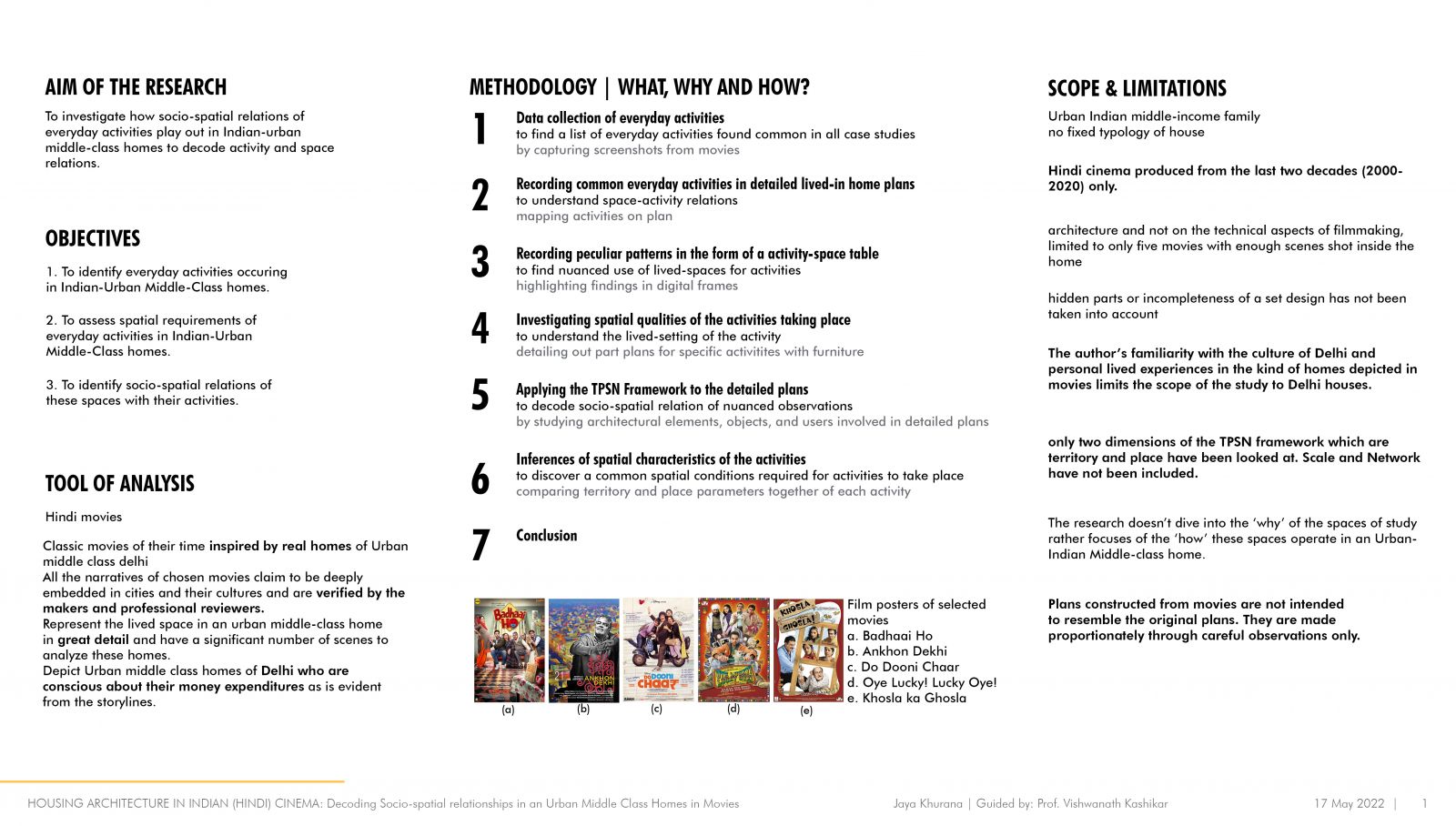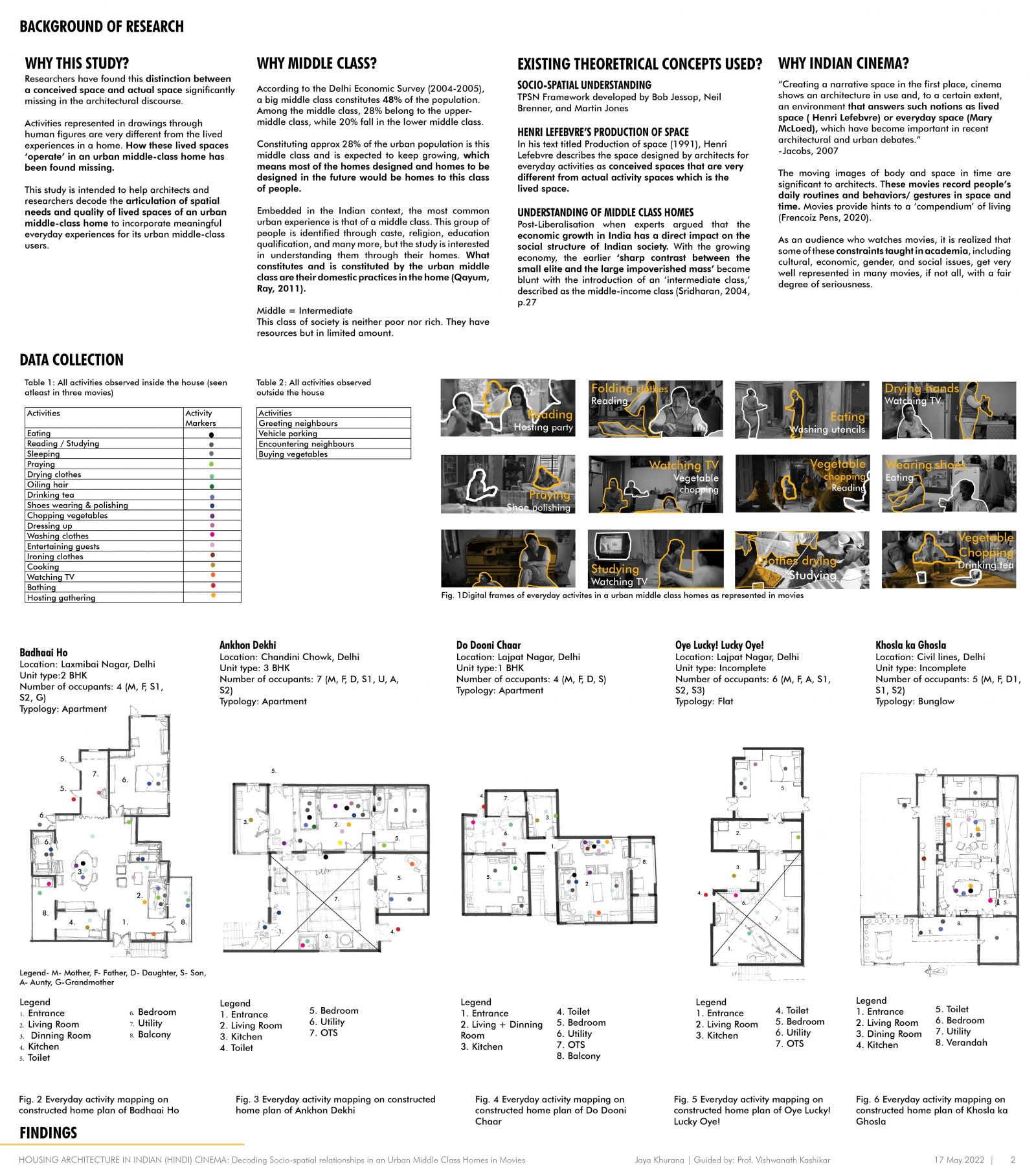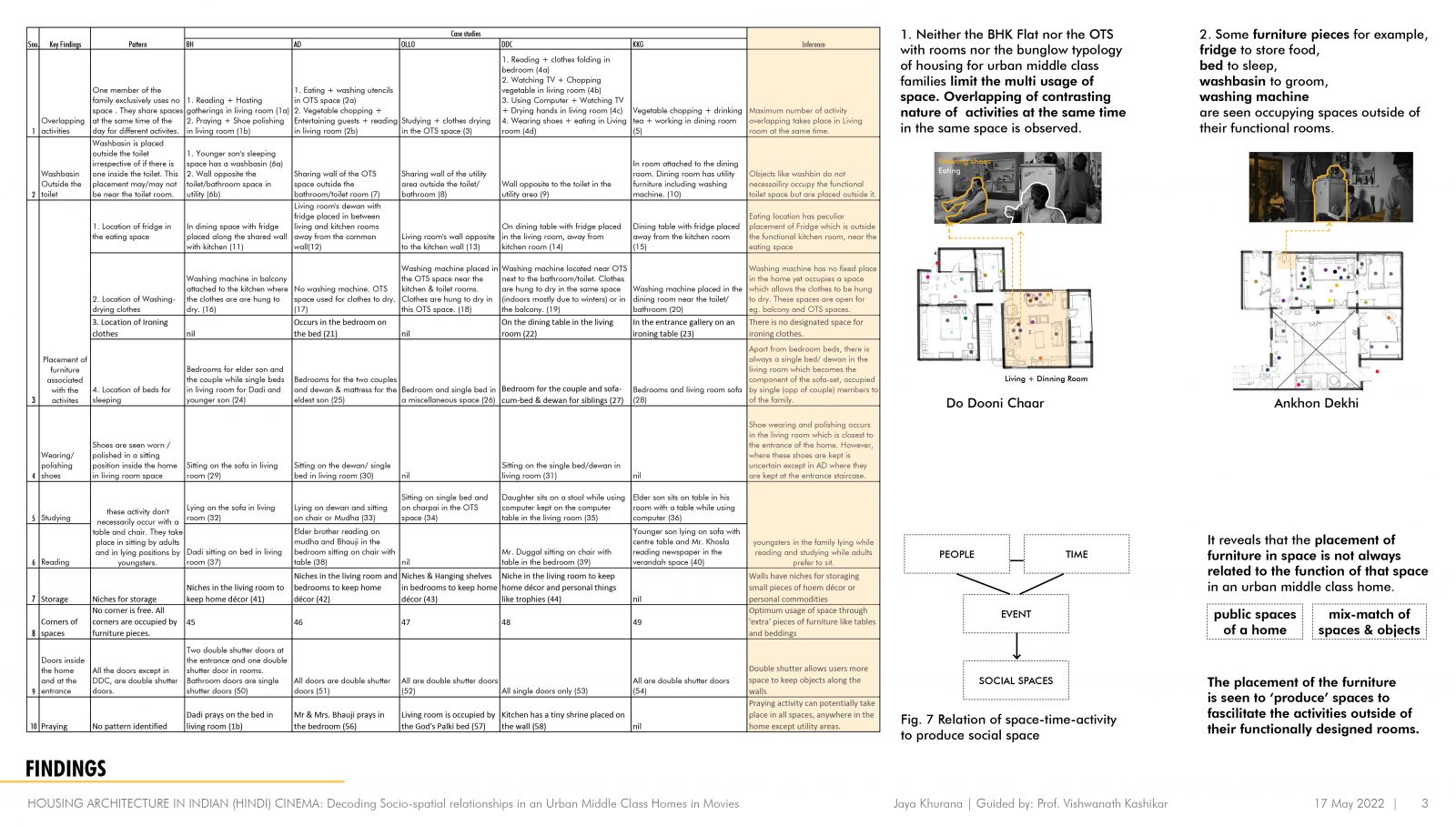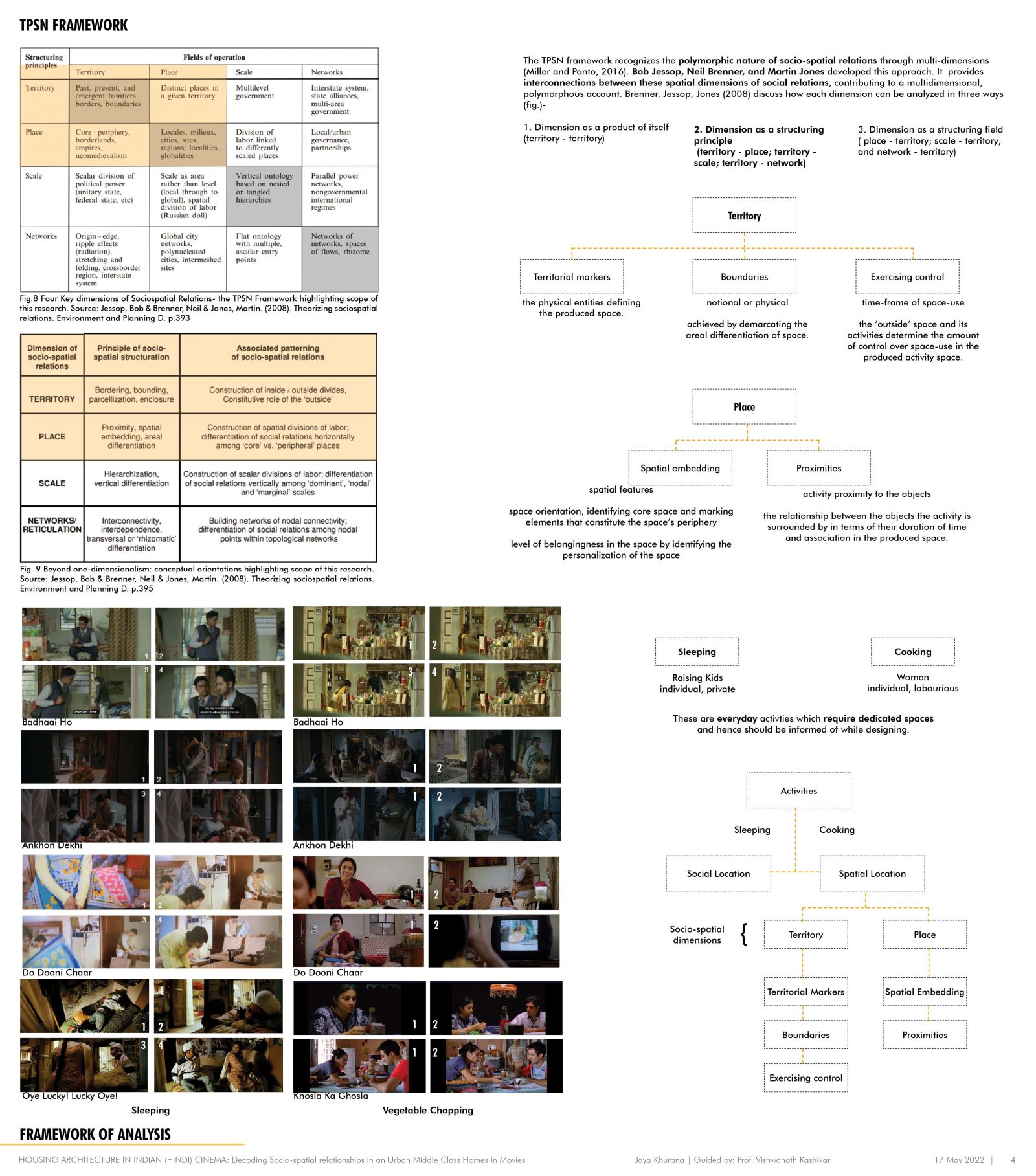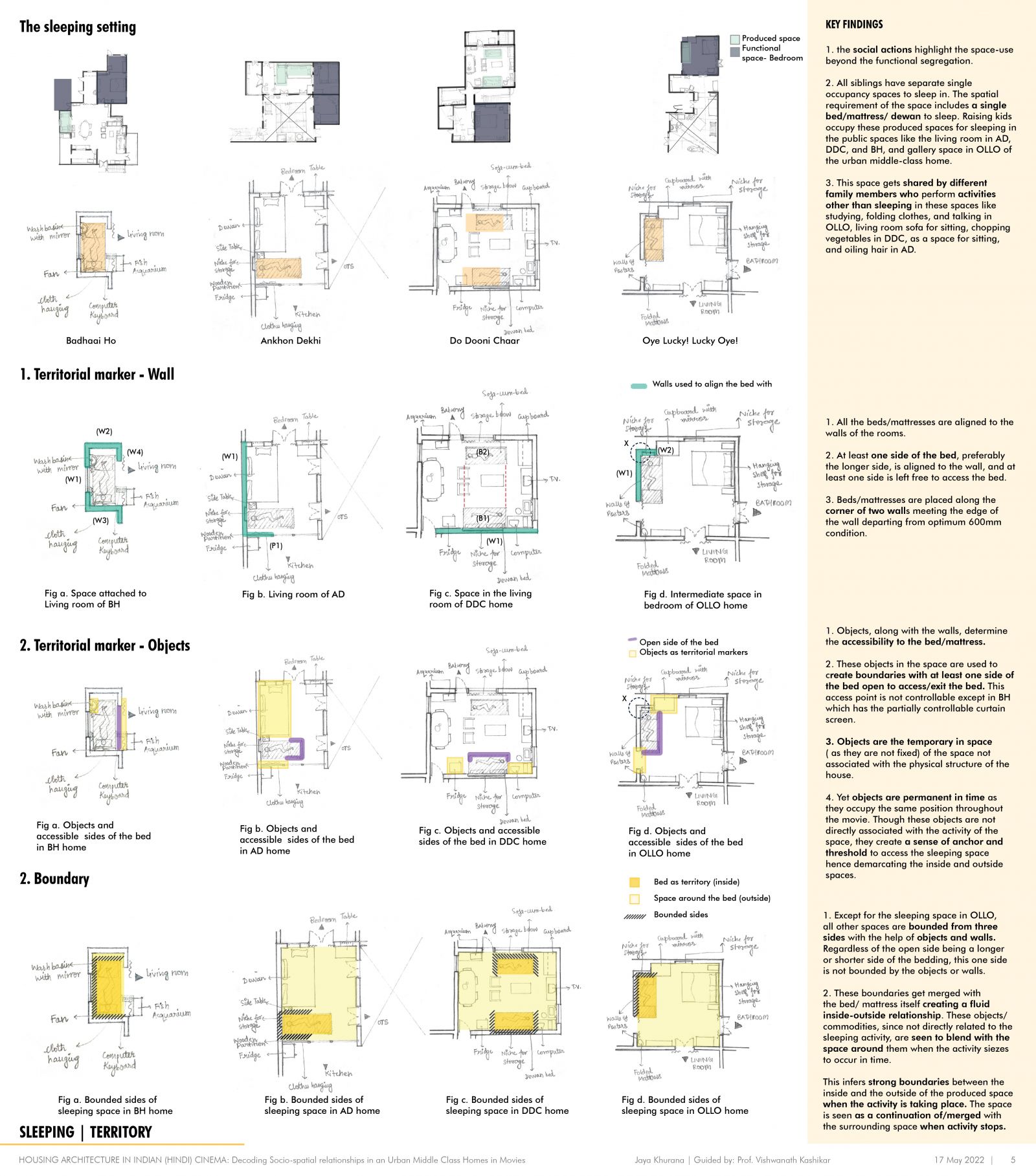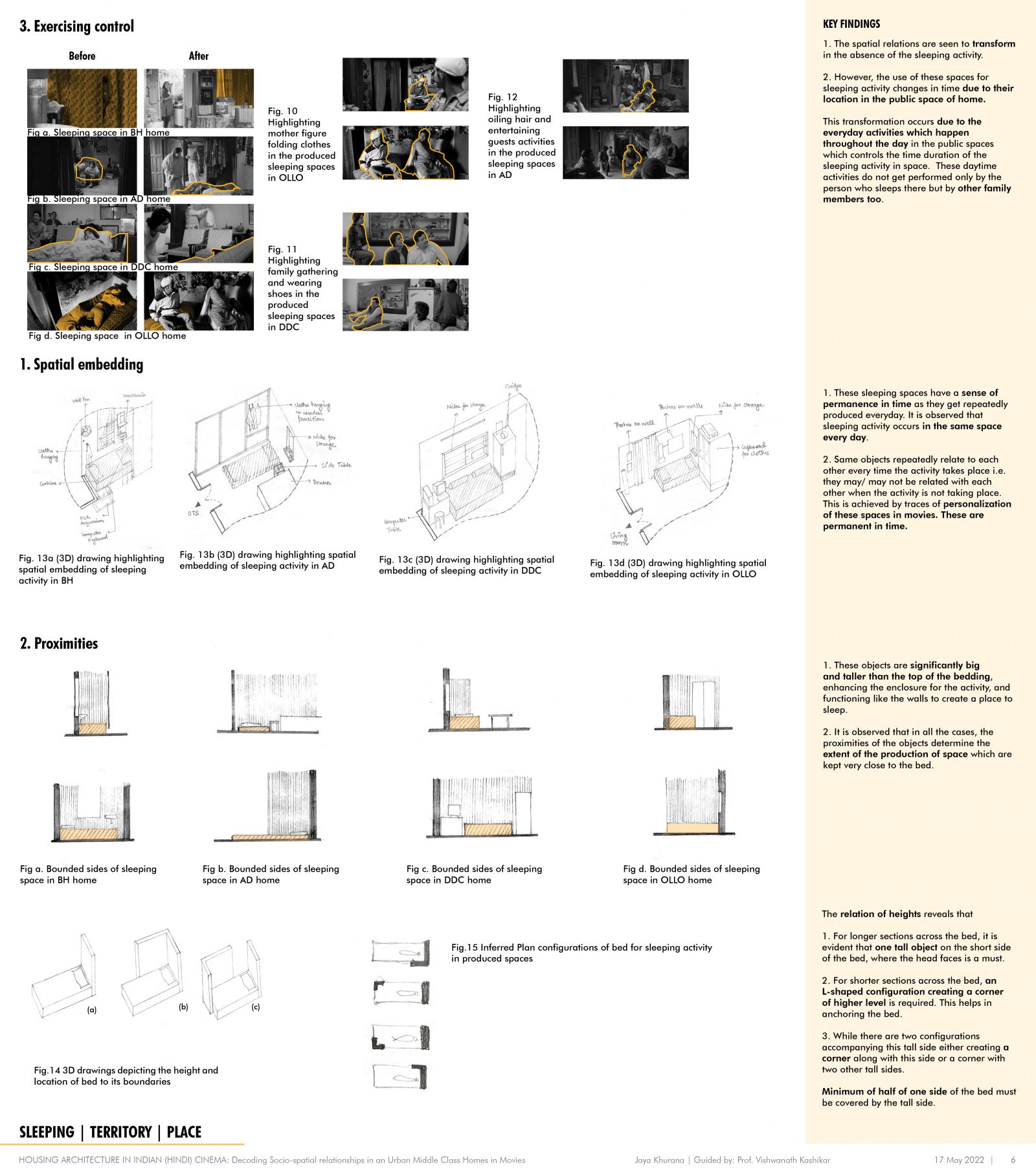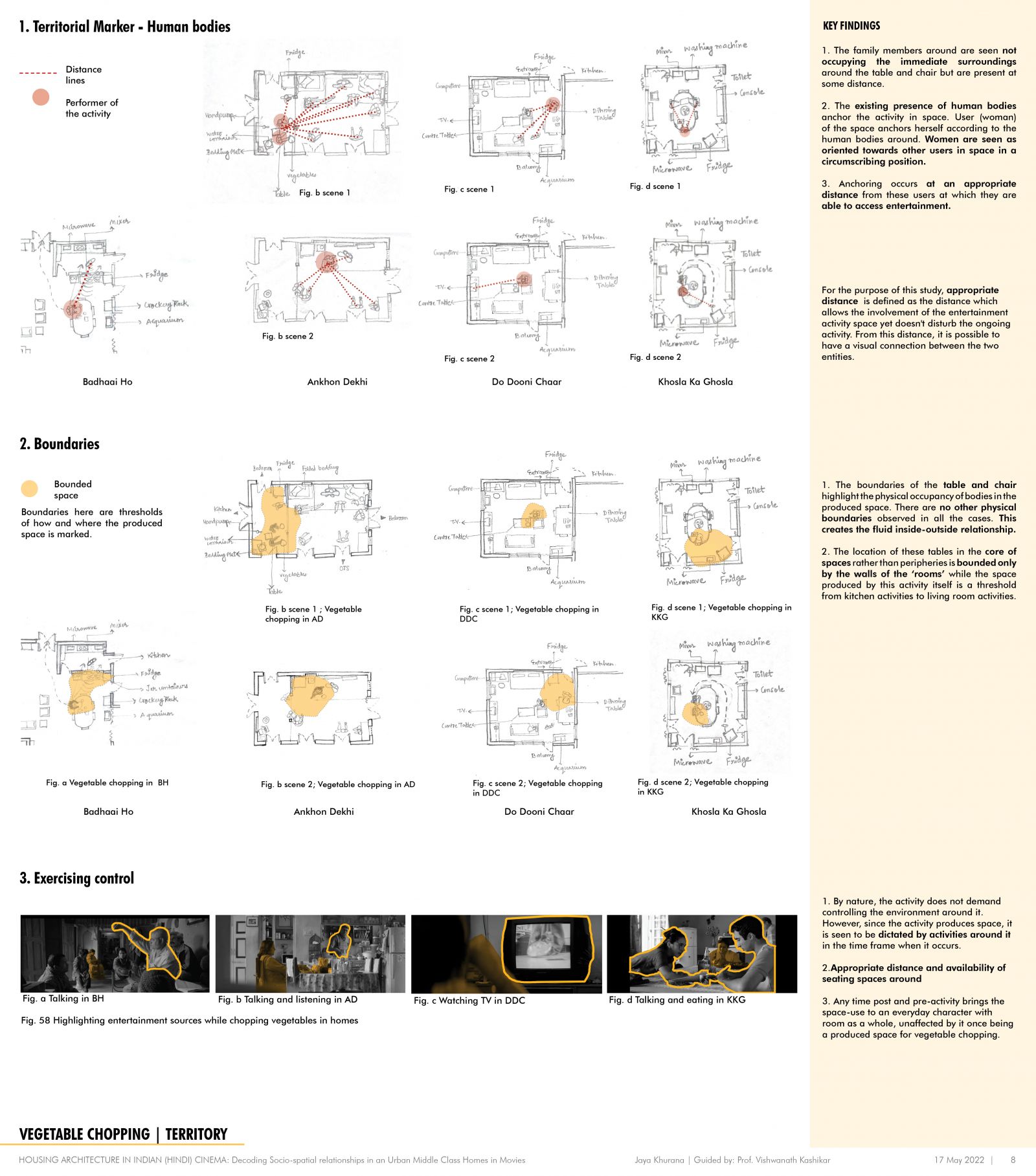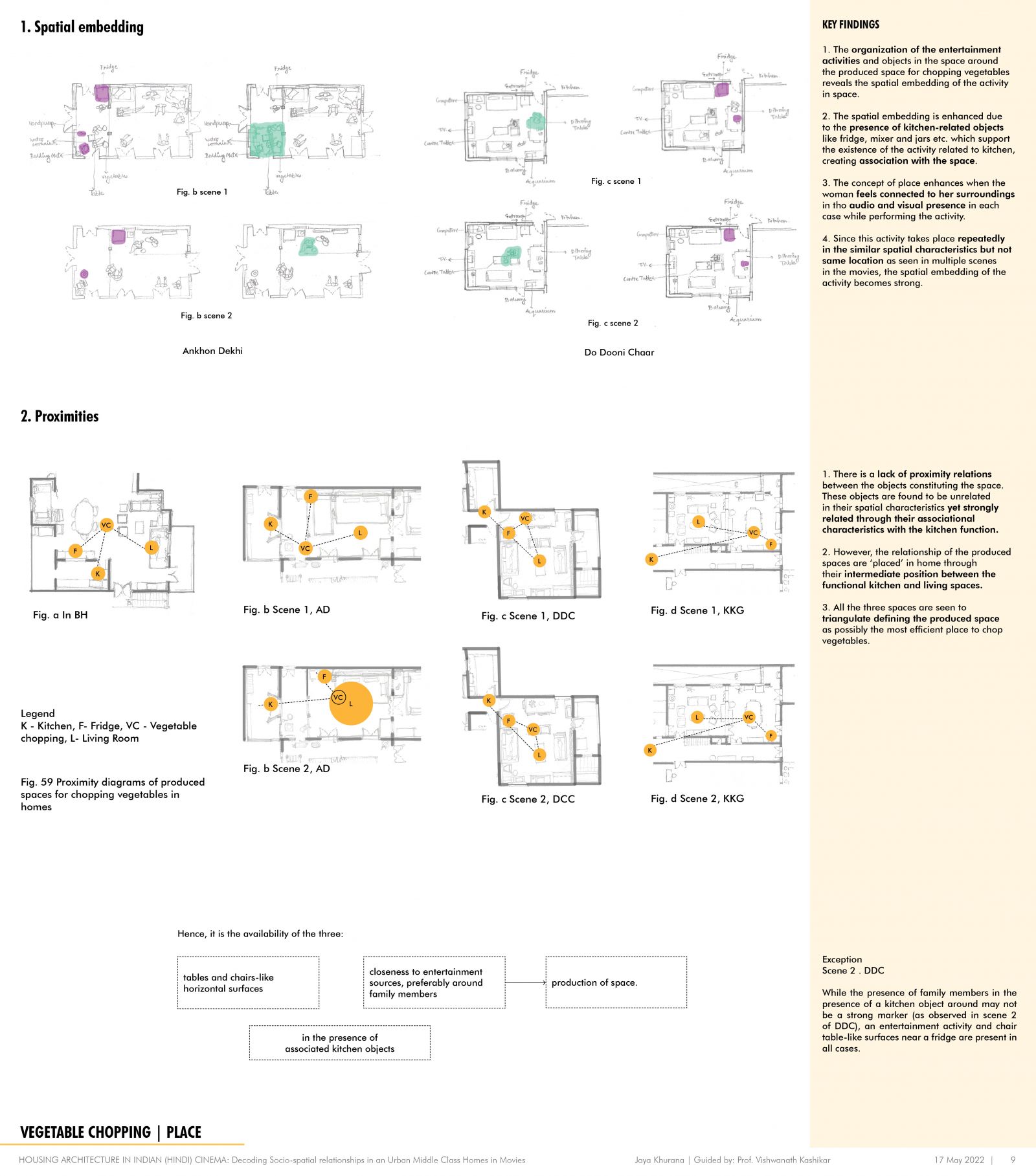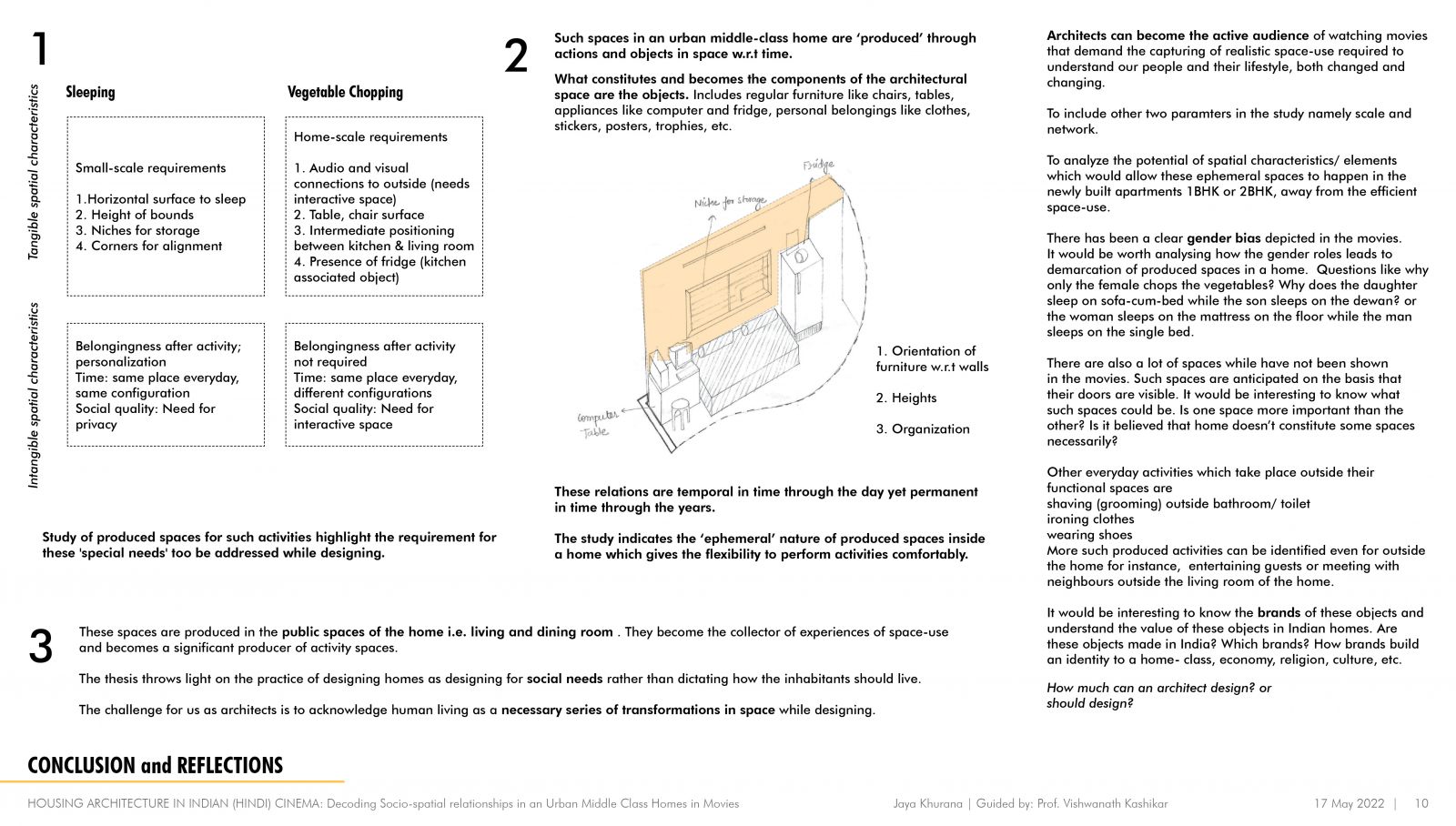Your browser is out-of-date!
For a richer surfing experience on our website, please update your browser. Update my browser now!
For a richer surfing experience on our website, please update your browser. Update my browser now!
Architecture is all about experiences. These experiences are felt by users when they perform activities in space. Daily activities often get neglected in the monotony of every day, but they consistently contribute to our lifestyle. While performing such activities, space is not just a background but also an active participant in supporting these activities and thus must be informed of while designing. Research undertaken on Urban Housing in India investigates the socio-spatial relationships of everyday activities in Indian-urban middle-class homes. It is a qualitative research focusing on the archival data recorded in the form of Indian cinema (movies) based on urban middle class houses in Delhi, India. Movies studied include Badhaai Ho, Ankhon Dekhi, Do Dooni Chaar, Oye Lucky! Lucky Oye!, and Khosla ka Ghosla which are inspired from and based on the observed and experienced realities by its makers - directors, cinematographers and cameramen. They become a tool of analysis that represent lived experiences of everyday life and become powerful representations that reveal how spatial characteristics, narratives, and context come together to bring about perspective to a quality of life. On deploying TPSN framework to these lived experiences, contextualised to Architectural housing scale, the study of territory and place-making reveals the occurrence of activities like sleeping and vegetable chopping out of their functional domain of the bedroom and kitchen respectively. Such activities, in Henri Lefebvre's concepts, 'produce' social spaces inside the home. Users produce spaces in order to perform activities in space which have characteristics of developed with the presence of commodities in the home like furniture. Have you ever seen two unrelated 'objects' put together in space in your urban middle-class home? There is always a logic to it.
